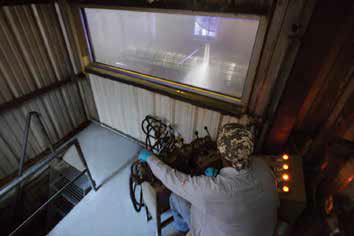| This article is part 2 of a 3-part series. |
| Part 1 | Part 2 | Part 3 |
Introduction
To ensure smooth and safe operations and avoid unscheduled shutdowns, exceptionally high standards must be employed with every method of cleaning shell and tube heat exchangers. Plant operators or third-party contractors must be prepared to employ multiple techniques for cleaning because one method does not always sufficiently remove every type of residual debris from a bundle or exchanger. The most common types of cleaning are hydroblasting, hydrolancing, abrasive blasting, and both chemical and thermal decomposition. These methods are also used for decommissioning heat exchangers and process equipment for scrap.
This article is Part II of a three-part series that explores the various methods, benefits, challenges and solutions to efficiently and effectively clean heat exchangers, both onsite and offsite. In Part I, we discussed the importance and various benefits of optimal cleaning, as well as how to determine whether heat exchangers should be cleaned onsite or offsite. In Part II, we will discuss the various methods of cleaning heat exchangers. Lastly, in Part III, we will discuss specific safety and environmental issues.
Importance of Cleaning
Over the operational lifespan of most heat-exchange equipment, various chemicals or solids known as foulants will "fall out" or be extracted from feedstock solutions, due to changes in temperature. These solids can adhere to the walls of the equipment's tubes, as well as inside various valves and piping, thus causing the equipment to foul. Over time, these residual foulants will be compounded, which will dramatically change the flow rates of fluid through the exchanger. These effects could lead to a loss of efficiency and functionality, as well as increasing the risk of unsafe operations. Excessive fouling can be avoided by routinely cleaning the buildup of chemicals and residue foulants that coat the tubes before the contaminants reduce or stop heat transfer.


















Comments and Discussion
There are no comments yet.
Add a Comment
Please log in or register to participate in comments and discussions.